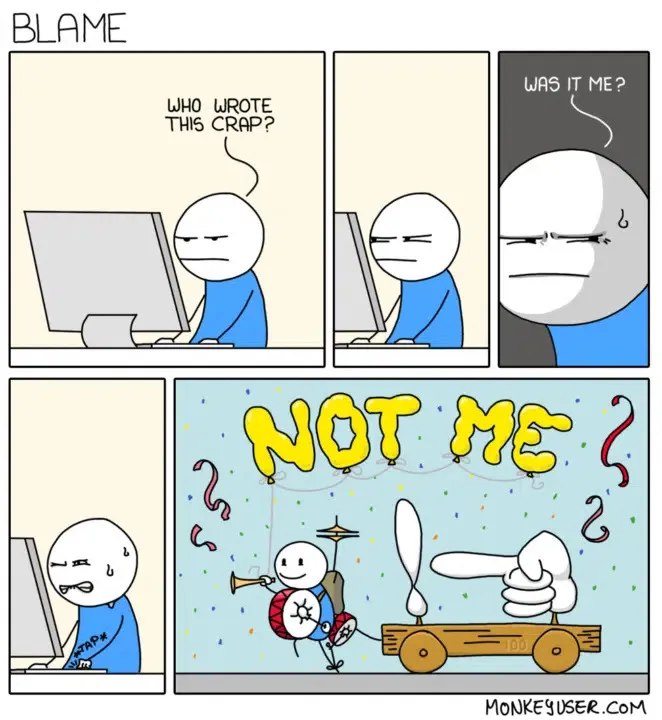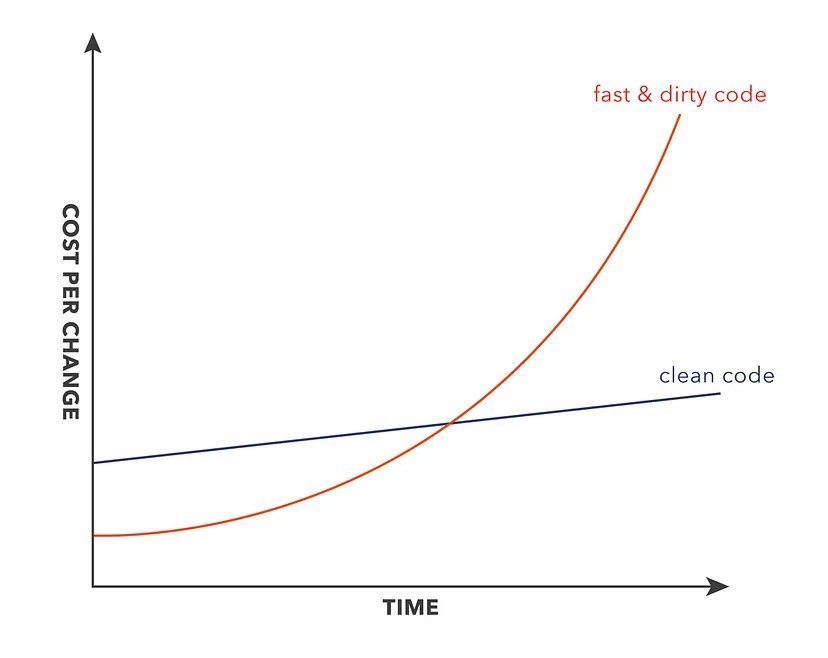
What is clean code?
5 minutes to read

Clean code is an essential aspect of software development, and it plays a critical role in delivering high-quality software products that meet the needs of users. The term clean code refers to code that is well-structured, readable, and maintainable, making it easier for developers to understand and modify the code as needed.
One of the main benefits of clean code is improved readability. When code is well-structured and organized, it becomes easier for other developers to understand what the code is doing and how it works. This makes it easier for them to make changes or fix bugs, reducing the risk of introducing new bugs and making the development process more efficient.
Another key benefit of clean code is increased maintainability. When code is well-structured and well-documented, it becomes easier for developers to maintain and update the software over time. This is particularly important for large and complex software systems, where code changes can have far-reaching consequences. With clean code, developers can make changes with confidence, knowing that the code will continue to work as expected.
Clean code also promotes good software design and architecture, which is essential for building scalable and robust software systems. When code is well-designed, it becomes easier to add new features or make changes to existing features without disrupting the overall system. This helps to ensure that software products remain relevant and useful over time, even as the needs of users change.
In addition to these benefits, clean code also supports collaboration between developers. When code is well-structured and readable, it becomes easier for multiple developers to work on the same codebase, reducing the risk of conflicts and making the development process more efficient.
So, how do you write clean code? There are several key principles to keep in mind, including:
- Readability: Code should be easy to read and understand, with clear variable and function names, meaningful comments, and consistent formatting.
- Simplicity: Code should be as simple as possible, avoiding complex logic and redundant code.
- Modularity: Code should be broken down into small, reusable modules, making it easier to test and maintain.
- DRY (Don’t Repeat Yourself): Code should not contain redundant information, as this makes it harder to maintain and can lead to bugs.
- Testing: Code should be tested thoroughly, with unit tests for individual modules and integration tests for the entire system.
Here’s an example of clean code written in Python:
def calculate_sum(numbers):
total = 0
for num in numbers:
total += num
return totalIn this example, the code is easy to read and understand, with meaningful variable names and clear logic. The function takes a list of numbers as an argument and calculates their sum, returning the result. This code is simple, efficient, and easy to maintain, making it a good example of clean code.
Here’s an another example of clean code for function declarations and reusable functions in Python:
def validate_input(value):
if not value:
raise ValueError("Input cannot be empty.")
return value
def calculate_average(numbers):
numbers = validate_input(numbers)
total = sum(numbers)
average = total / len(numbers)
return averageIn this example, the code defines two functions: validate_input and calculate_average. The validate_input function is a reusable utility function that checks if the input value is empty and raises an error if it is. This function can be used in other parts of the code to ensure that inputs are valid.
The calculate_average function takes a list of numbers and calculates their average. This function first calls the validate_input function to ensure that the input is valid, and then calculates the sum of the numbers using the sum function and the average by dividing the sum by the number of elements in the list.
This code is well-structured, readable, and maintainable, with clear and meaningful function names, and the use of reusable functions. These characteristics make it a good example of clean code.
Advantages of clean code in software development include:
Improved readability: Clean code is easy to read and understand, making it easier for other developers to work with.
Increased maintainability: Well-structured and well-documented code is easier to maintain and update over time.
- Better software design: Clean code supports good software design and architecture, making it easier to add new features or make changes to existing ones.
- Better collaboration: Clean code makes it easier for multiple developers to work on the same codebase, reducing the risk of conflicts and making the development process more efficient.
- Improved quality: Clean code is less prone to bugs and errors, helping to ensure the quality of software products.
- Increased productivity: Clean code is easier to work with, reducing the time required to make changes and fix bugs, and improving the overall productivity of software development teams.
- Better performance: Clean code is often more optimized, helping to improve the performance of software systems.
- Enhanced security: Clean code helps to reduce the risk of security vulnerabilities, making software systems more secure.
- Better scalability: Clean code makes it easier to build scalable software systems, which can adapt to changing user needs over time.
- Increased reliability: Clean code helps to ensure the reliability of software systems, reducing the risk of crashes or other unexpected behavior.
Clean code can fail in a number of ways, including:
Lack of maintainability: Over time, as code evolves and changes, it can become difficult to maintain if it is not kept clean and organized.
Increased complexity: Clean code can sometimes become overly complex if it tries to solve too many problems at once, making it difficult to understand and maintain.
- Unclear logic: If the logic in a piece of clean code is unclear, it can become difficult to make changes or fix bugs, leading to increased development time and decreased quality.
- Inefficient performance: Clean code can sometimes have poor performance if it uses inefficient algorithms or data structures, leading to slow software systems.
- Security vulnerabilities: Clean code can sometimes contain security vulnerabilities if it is not designed with security in mind, making software systems vulnerable to attacks.
- Scalability issues: Clean code can sometimes fail to scale well if it is not designed with scalability in mind, leading to slow or unreliable software systems as user needs grow.
- Inadequate testing: Clean code is only as good as its tests, and if tests are not adequate, it can be difficult to ensure the quality of software systems.
- Lack of documentation: Clean code that lacks documentation can become difficult to understand and maintain over time, as the knowledge of how it works is lost.

In conclusion, clean code is a critical aspect of software development that plays a key role in delivering high-quality software products that meet the needs of users. By writing clean code, developers can improve readability, maintainability, software design, and collaboration, making the development process more efficient and helping to ensure the longevity of software products over time.
